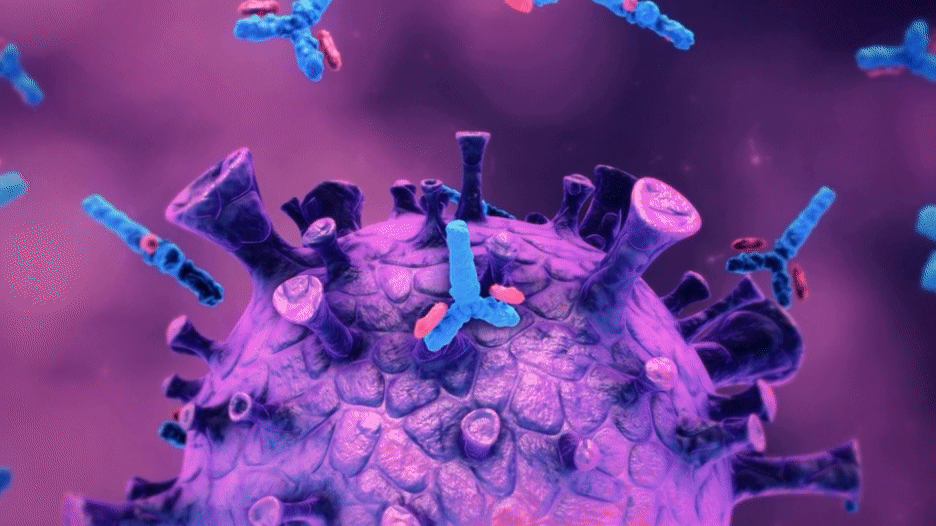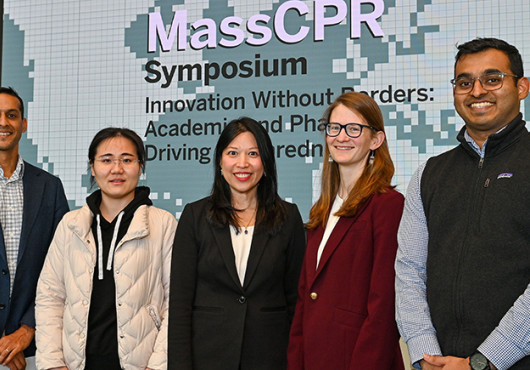
Four years after the first cases of an unusual pneumonia appeared in Wuhan in December 2019, nearly 7 million people have lost their lives to COVID-19, and some 65 million more continue to struggle with the infection’s mystifying aftermath — a poorly understood syndrome known as long COVID.
But amid the devastation of the pandemic, physician-scientists have gleaned new insights about the immune system that are reshaping some long-held notions about human immunity.
These insights have been made possible not only by the sheer scale of the contagion — hundreds of millions infected — but also by the unprecedented ability to probe how a virus interacts with its human host using advanced tools not available even some 20 years ago. This new knowledge, scientists say, could inform the way we think about, diagnose, and treat other infectious and non-infectious diseases, some of them perhaps still unknown.
“This might be a golden age for human immunology, which has been relatively understudied because we have had fewer tools to do so,” said Shiv Pillai, professor of medicine at Harvard Medical School and Massachusetts General Hospital and a principal investigator at the Ragon Institute. “It’s been a huge effort across the world that’s given us new ways to look at disease from an immunological perspective. Of course, we’re still learning.”
Some of the most intriguing insights include a more nuanced understanding of immune memory, the longevity of immunity, and the post-infectious aftermath of COVID.
Immunity is not binary
One of the key insights emerging from the pandemic is the realization that the gradual waning of the immune response induced by mRNA vaccines may not be unique to these vaccines, said Pillai, who is a lead investigator with the HMS-led Massachusetts Consortium on Pathogen Readiness (MassCPR). It may also be true of other vaccines previously thought to induce lifelong immunity.
The mRNA vaccine is a completely new way to immunize. It induces a rapid, powerful, yet fleeting response against symptomatic COVID disease. While the protection induced by mRNA vaccines against death and severe illness remains strong over time, protection from symptomatic infection is less durable. This is mainly because the virus keeps mutating so it can evade the immune system’s defenses — an evolutionary race between host and pathogen.
However, Pillai adds, it’s also because the human immune system needs more time to develop long-term immune memory against the pathogen. This memory strengthens each time the immune system encounters the virus, whether through a vaccine or natural exposure. Something similar likely happens with chicken pox and measles.
“We thought, oh, you get measles or chickenpox, or you get vaccinated, and you are immune for life. But there is emerging evidence to suggest otherwise,” Pillai said.
One recent study, for example, found that the rates of shingles (herpes zoster) have grown over the past 60 years for reasons that remain poorly understood. The pathogen that causes shingles, varicella zoster virus, is also the culprit behind the childhood infection varicella, or chickenpox.
One possible explanation could be the relatively low levels in recent years of circulating viruses that, in the past, would have led to subclinical infections and thus naturally “boosted” the immune systems of previously infected or vaccinated individuals.
“The reason we thought this was that, in the past, we’d get vaccinated or recover from infection, but the infection would still be endemic, and we thus may have all gotten reinfected and boosted multiple times, often without knowing it,” Pillai said. “Most of us likely got reinfected by many things multiple times and developed really good immunity.”
Therefore, the idea that a single encounter with a pathogen leads to lifelong immunity may need to be reconsidered. The same may be true of vaccines — the protection induced by some vaccines and viral exposures is bound to wane over time.
Pillai emphasized that vaccines, mRNA and others, are lifesaving. However, we may need to dispense with the notion that they provide one-and-done protection. Vaccines, Pillai said, remain the most important — and safest — tool to build up our immune defenses. But they are not perfect.
“COVID has taught us that we simply do not fully understand the durability of human immune memory, and that the commonly held views about the durability of immunity may need to be rethought,” Pillai said. “Is immunity due to vaccine alone or due to vaccine plus natural boosting from exposure? Can we ever get complete immunity against a very easily transmitted pathogen after it mutates? That’s probably never going to happen. But we can prevent significant disease by vaccination.”
A new platform for therapies against cancer and more
The COVID mRNA vaccine works by inducing the body to produce its own safe version of the SARS-CoV-2 spike protein and train the immune system to recognize and disable it, then do the same once it encounters the actual virus. This approach — used successfully for the first time against SARS-CoV-2 — has become the blueprint for harnessing the body’s immune responses to produce its own “therapy” against various infectious diseases as well as multiple types of cancer, several forms of heart disease, rare diseases such as cystic fibrosis, and certain autoimmune conditions.
COVID shines light on other mystifying conditions
The aftermath of SARS-CoV-2 infection can induce a constellation of post-infection symptoms — some limited in duration and some prolonged — that have strikingly similar features to syndromes such as Kawasaki disease, fibromyalgia, and post-treatment Lyme disease syndrome.
Could the overlapping symptoms mean these conditions share a common biological mechanism that is unlocked by the way the virus interacts with various organs and organ systems? This is precisely the question that MassCPR researchers are exploring in their quest to understand the mechanisms that fuel long COVID, a condition that may be, in fact, multiple conditions triggered by a viral infection.
The immune system’s “original sin” may be a virtue
The pandemic has brought about a more nuanced understanding of immune imprinting, a central feature of immunity.
When our bodies first encounter a virus, they form a long-term memory of it. This original encounter shapes subsequent responses not only to the same virus but also to pathogens that may look similar. This form of immune imprinting has been classically described as the “original antigenic sin,” a reference to the first encounter with a specific antigen that subsequently biases the immune system toward that pathogen.
When the immune system comes across a new virus, instead of rapidly producing highly specific antibodies against this new virus, it instead defaults to its first memory of the original lookalike — akin to a person with poor eyesight who sees vaguely familiar faces in the distance and greets them as friends when they are strangers who merely look like an acquaintance. Immune imprinting can create a protective immune response to viruses that resemble the original antigen because parts of these new viruses will look like the original antigen that created the memory. However, immune imprinting can also interfere with the formation of a rapid immune response against new viruses or to the mutated parts of a previously seen virus. It somewhat blunts the accuracy of the initial defense.
MassCPR researcher Duane Wesemann, an associate professor of medicine at HMS and an immunologist at Brigham and Women’s Hospital, thinks such a view may be a bit too simplistic.
“We’re converging on a more nuanced understanding of immune imprinting, which I think is a nice lesson from the COVID-19 pandemic,” Wesemann said. “Of course, a pandemic is a terrible thing, but putting that aside and looking at how our immune system processes information and seeing biology at work is really exciting.”
It is true that first-encounter memory will be stronger and could lead to a lifelong bias toward the original strain of the virus, Wesemann said. Indeed, even when subsequent exposures broaden the immune response to encompass newer strains, reactivity toward the original virus remains higher. This could mean that an individual becomes more susceptible to infection when a previously encountered virus mutates sufficiently to become unrecognizable to antibody-producing immune cells.
But, Wesemann notes, early life exposure to a virus also tends to offer long-lasting protection against serious illness caused by similar strains of the virus, even if that later-in-life response may not be strong enough to prevent symptomatic infection. Thus, he said, branding such immune imprinting as either good or bad fails to capture the nuance and complexity of a phenomenon that is anything but binary.
What about COVID-19?
Evidence shows that when individuals who had been infected with or vaccinated against the original, Wuhan strain of the SARS-CoV-2 virus encountered a later variant, they produced higher levels of antibodies to the original strain and fewer antibodies to the new strain, compared with individuals who had not been infected with any form of the virus. However, research shows that any prior exposure to SARS-CoV-2 by infection and/or vaccination reduced the disease severity of subsequent infections.
Moreover, research suggests that prior vaccination does not preclude the formation of new responses to mutated parts of the virus. The limits of immune imprinting could be overcome by having a higher antigen dose in a vaccine, by polyvalent vaccines that generate response to more than one variant, or by augmenting vaccines with adjuvants — substances that enhance the immune response.
Above all, Wesemann added, antibody production based on immune recall from past exposures is a fast, economical way to create quick protection in the context of uncertainty when a rapid response is more important than a highly precise one.
There is an evolutionary advantage to the immune system maintaining a broad repertoire and a long memory of past exposures; it’s a way to hedge its bets for future pathogen encounters. The immune system could free up memory and delete cells bearing memory of previous viral encounters, Wesemann explained, but it doesn’t.
Keeping these old “files” increases the likelihood that at least some of these long-lived antibody-producing cells would recognize some parts of a never-before-seen virus. Making new antibodies that are highly attuned to a new virus takes time and energy — precious resources in a high-stakes situation where the speed of response is critical.
So, the immune system deploys two lines of response — a fast but imprecise one that relies on preexisting defenses and a slower, more precise one that gradually hones its arsenal to attack the new virus.
“The immune system is smart enough to know it needs both speed and precision,” Wesemann said. “But to do both, it initially gives up a little bit on precision in favor of speed.”
Viewed that way, Wesemann said, the original antigenic sin may be, in fact, a virtue — an evolutionarily refined optimum of speed, precision, and adaptability in the face of uncertainty.





